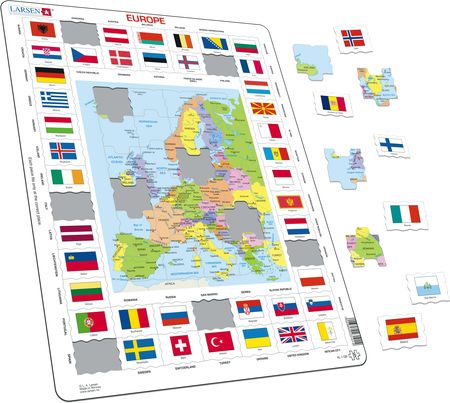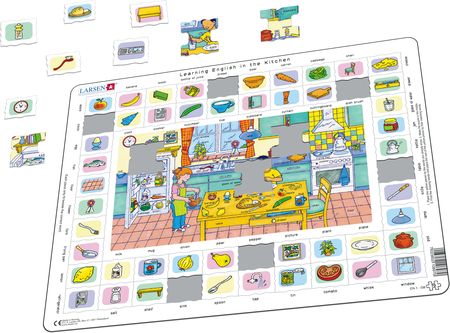
Why choose a Larsen puzzle
- The youngest children develop their motor skills with puzzle-pieces they will remember
- Older kids play and learn about many interesting themes
- Self-checking pieces encourage the children and help them to concentrate
- Extra thick and solid pieces
- Made in Europe of recycled board
- The Larsen Puzzle range has been developed through 60 years
- Lots of thoughts and considerations goes into every puzzle we make
- The puzzles are made from 100% recyclable materials
- We use hundreds of specially made cutting tools to make our great range of fun and educational puzzles, many custom made for a specific puzzle
Children of all ages will learn to be patient and to believe that they can make it, but remember that young children prefer puzzles that are not too difficult. They will rather put together a puzzle many times than to strive with one that is difficult.
Formats/sizes
We have been working with the same format/size since about 1960, our MAXI format which is 28.5 x 36.5 cm. By dividing this format in 2 and 4 get smaller puzzles. MIDI and MINI puzzles have been produced since 1972, and these are the only three sizes we currently produce.
MAXI
- Produced as a single 36.5x28.5 cm puzzle
- Number of pieces ranging from 15 to 140
MIDI
- Produced as sets of 2 18.3x28.5 cm puzzles
- Number of pieces ranging from 10 to 35
MINI
- Produced as sets of 4 14.3x18.3 cm puzzles
- Number of pieces ranging from 5 to 14
Puzzle-piece shapes
It is important for the youngest to have puzzles with pieces of different shapes, not the traditional puzzle pieces that most manufacturers offer. When we make the puzzles, we cut so deep that you can see the shapes of the pieces in the tray below. When playing with our puzzles, the children will look for pieces with the right shapes rather than looking at the picture.
Many of our puzzle pieces are shaped like animals and other figures. This makes the puzzles a bit easier for the children, and they find it fun to recognize the shapes.

For children who have not yet developed full motor skills in their hands, we have made puzzles where each piece lies steadily within its own frame. This way the children can place each piece without bumping into and moving the neighbouring pieces away from their places.
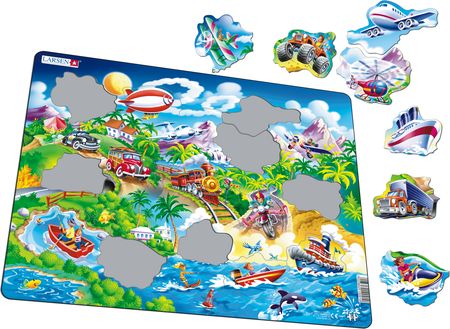
Question and answer puzzles
We started to make what we called «Problem puzzles» in 1971. These are puzzles with one problem that must be solved for each piece. The first Problem puzzle we made was the Flag-Puzzle. On each piece of this puzzle is one flag and name of capital, and the pieces only fits by the correct name of their country.
Soon followed Problem puzzles with animals, letters, words and sentences, clock, traffic signs and so on. The benefit with these puzzles is that each piece only fits in the correct place. So if the piece fits, you know immediately that the answer is correct. This makes the puzzles a very effective teaching aid.
Problem puzzles soon became popular in schools. With many puzzles in the classroom, the pupils can work individually with puzzles that fit each one, and they can work at their own pace. The work becomes pleasurable and the pupils work effectively without even knowing that they are working.
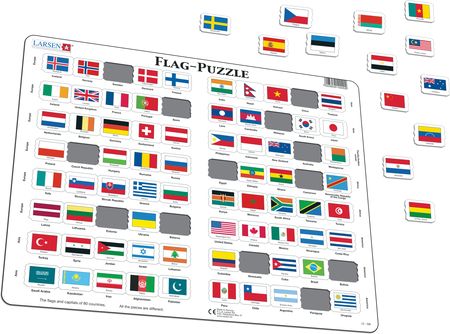
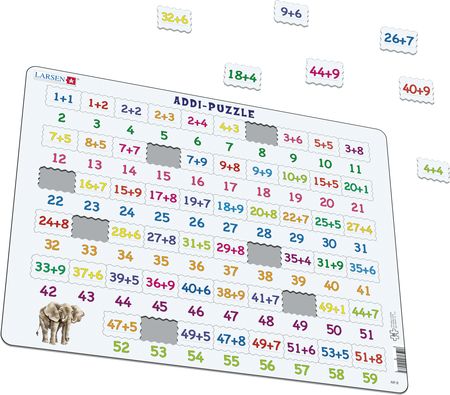
Double frame puzzles
In 1998 a customer asked us to make a puzzle with the body. We had to sit down and think of how to do this in a meaningful way, and then came the idea of having a second fixed frame within the outer frame. Then we have a traditional puzzle in the middle, and around are 20 pieces with body parts. The piece with the ear only fits by the arrow pointing at the boy's ear, and so on.
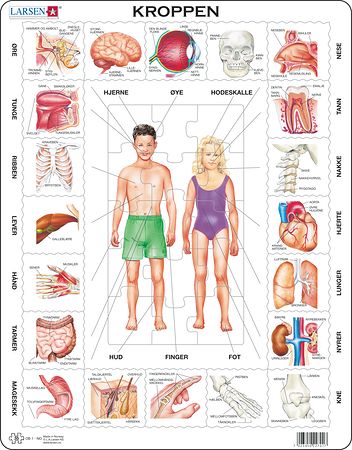
The same idea has later been used for Flag and map puzzles, Learning English- and Nature puzzles.
